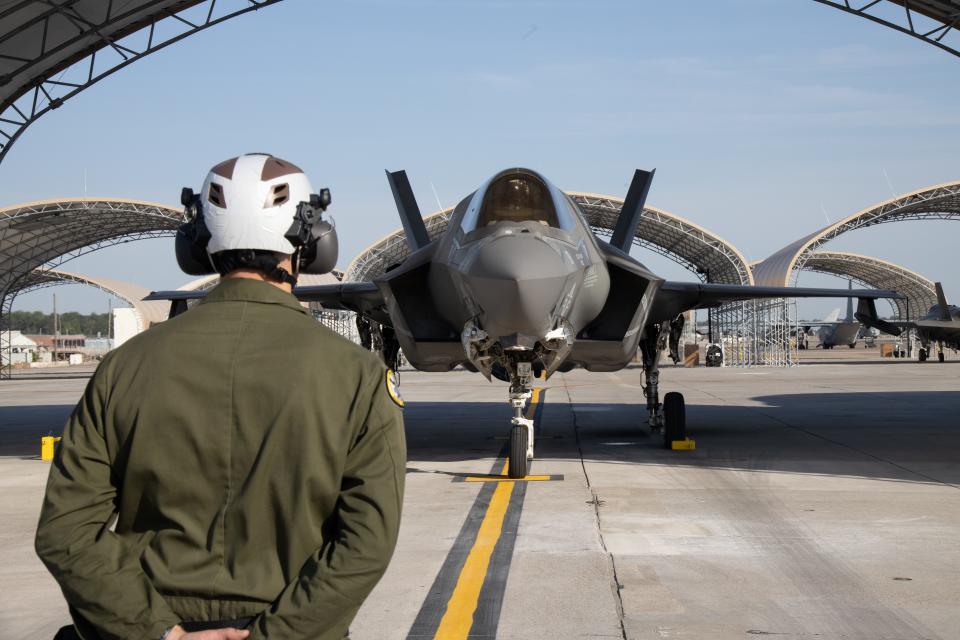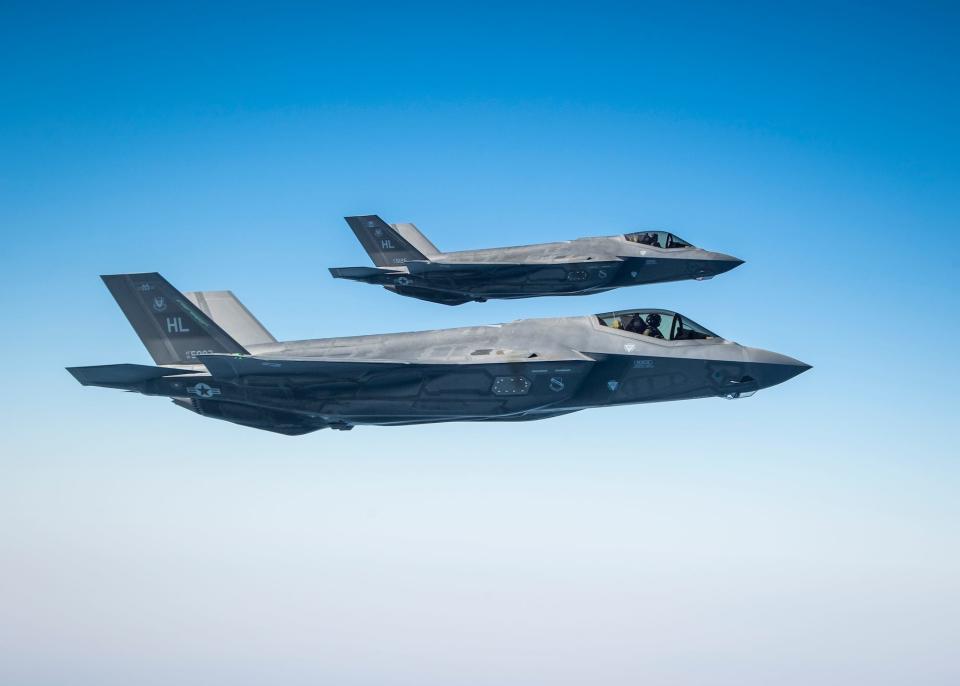America's F-35 stealth fighters are going to be flying less as costs soar, watchdog finds
The US military's F-35 program is very expensive — and beset with challenges.
A new watchdog report found that the lifetime cost for the stealth fighter has topped $2 trillion.
The jet's availability has decreased, and the Pentagon also plans to use it less.
The US military is cutting future flight hours for the F-35 — already not available as often as it should be — as the program's price tag grows, a new watchdog report revealed this week.
The Pentagon estimates that the full life-cycle cost for the F-35, which consists of purchasing, operating, and sustaining the aircraft over the next several decades, has now surpassed more than $2 trillion, the US Government Accountability Office noted in a Monday report.
The eye-popping figure from the GAO for what was already the world's costliest weapons program is much larger than the previous estimate of $1.7 trillion. The Department of Defense currently fields around 650 F-35s — of which there are three variants for the Navy, Air Force, and Marine Corps — and it plans to procure around 2,500 in total by the mid-2040s.
The GAO also said that sustainment costs for the F-35 program grew from around $1.1 trillion in 2018 to about $1.58 trillion in 2023 — a 44% increase that comes, in part, as a result of the aircraft's extended service life from 2077 to 2088. Inflation and use play a role as well.

The Pentagon's planned future use of the F-35, as well as the stealth aircraft's overall availability over the past few years, have both decreased.
Changes to planned future use keep the costs down. "The military services have lowered the number of hours each aircraft is estimated to fly, which has contributed to reduced cost estimates and the services' ability to meet their affordability targets," the GAO said in its report.
The F-35 Joint Program Office reported in a 2020 Annual Cost Estimate that the advanced fifth-generation aircraft would fly 382,376 hours each year at "steady state," which was identified by the GAO as occurring in the mid-2030s. In a 2023 Annual Cost Estimate, however, the steady state flight hours decreased by nearly 82,000 per year to 300,524 — a 21% decrease.
The F-35 Joint Program Office and various military service officials told the GAO "that this reduction in planned flight hours reflects lower than anticipated use up to this point and evolving projections about future use of the aircraft," the report said.

But there are other challenges. The GAO said it has consistently found that the F-35 fleet is not meeting availability and performance goals, even as projected costs for the program go up. Indeed, a 2023 report revealed that the aircraft was only capable of flying missions just over half the time, thanks to a plethora of serious and widespread maintenance issues.
The Pentagon "has pursued cost savings efforts and continues to look for new ways to reduce costs," the GAO explained in its report. However, it cautioned, "officials generally agree that these efforts are not likely to fundamentally change the estimated costs to operate the aircraft."
The Lockheed Martin-manufactured fighter is the second fifth-generation jet in the US arsenal after the F-22 Raptor, and was built for air-to-air combat and ground attacks. Several US allies also operate the aircraft.
The F-35 has so far only seen actual combat experience in the Middle East, with its most recent engagement occurring over the weekend, as Israel used the fighter in an air-defense role to defend against an unprecedented Iranian missile and drone attack.
Read the original article on Business Insider

